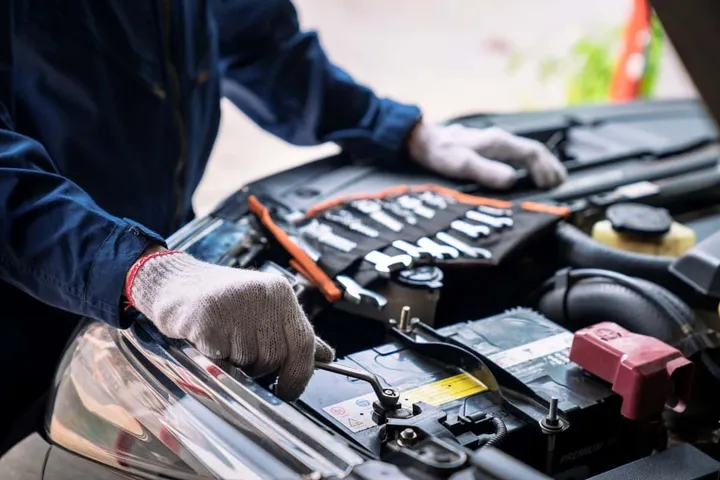


P0700 is a generic OBD-II (On-Board Diagnostics II) trouble code that indicates a malfunction in the transmission control system of a vehicle. This code is triggered when the Powertrain Control Module (PCM) or Engine Control Module (ECM) detects an issue with the Transmission Control Module (TCM) or the components it manages.

Before we dive into troubleshooting, let's take a moment to understand what the transmission control system is and why it's so crucial. This intricate system manages the smooth operation of your vehicle's transmission, ensuring power is transferred efficiently from the engine to the wheels.
At its core is the transmission control module (TCM), a sophisticated computer that constantly monitors sensors and actuators to make real-time adjustments. When the TCM detects an issue, it illuminates the MIL, alerting you to a potential problem.
Here's a table outlining the key components:
| Component | Function |
|---|---|
| Transmission Control Module (TCM) | Central computer controlling the transmission |
| Sensors | Provide data on vehicle speed, throttle position, etc. |
| Actuators | Components like solenoids that physically operate the transmission |
| Wiring/Connectors | Electrical connections between TCM and sensors/actuators |
Now, let's explore some common culprits behind transmission MIL requests:
The system relies heavily on sensors gathering data. A malfunctioning or disconnected sensor can trigger the MIL. Some key sensors include:

Vehicle Speed Sensor
Input/Output Speed Sensors
Throttle Position Sensor
Transmission Temperature Sensor
Low, contaminated, or burnt transmission fluid can cause:
Excessive wear
Erratic behavior
Ultimately a MIL
Electrical issues like these can disrupt data flow:
Loose connectors
Corroded wiring
Faulty grounds
Sometimes the MIL indicates a mechanical issue within the transmission itself, such as:
Worn clutch packs
Damaged solenoids
Failing torque converter
To diagnose, I always start by connecting a scanner to the vehicle's OBD-II port to retrieve any trouble codes from the TCM's memory. These provide clues about the problem's nature.
Here are some common transmission trouble codes and their potential causes:
| Code | Description | Possible Causes |
|---|---|---|
| P0700-P0799 | Transmission Control System | Wiring issues, TCM failure, Solenoid issues |
| P0710 | Transmission Fluid Pressure Sensor/Switch | Fluid leak/level, Sensor failure |
| P0715 | Input/Turbine Speed Sensor | Sensor failure, Wiring, Mechanical issues |
| P0720 | Output Speed Sensor | Sensor failure, Wiring, Mechanical issues |
Once you have the codes, consult repair manuals or online resources to understand what components or systems they relate to.
With the trouble codes in hand, here is my step-by-step process for repairing a transmission MIL:
I always start with a thorough visual check of the transmission area:
Look for leaks
Check for damage
Inspect wiring/connections
If codes point to a sensor issue, it's time for testing:
Check resistance with multimeter
Verify voltage supply and ground
Ensure signal output is within specs
Replace any faulty sensors.
For fluid-related codes, a fluid service is likely needed:
Drain old fluid
Replace with correct type/quantity
Also replace transmission filter
Electrical issues require tracing circuits and checking components:
Repair/replace any damaged wiring
Clean corroded connectors
Ensure grounds are tight and clean
For internal mechanical failures, more invasive repairs may be required:
Clutch pack replacement
Solenoid rebuilding
Torque converter replacement
I have a dedicated transmission overhaul area in my shop for these major jobs.
Once repairs are complete:
Clear codes from TCM memory
Take vehicle for comprehensive road test
Monitor for MIL and any abnormal behavior
If the light stays off and transmission operates normally, the repair was a success!
To prevent future issues, I recommend:
Following transmission fluid change intervals
Avoiding aggressive driving
Routine inspections during other services
Promptly addressing any abnormal symptoms
With proper maintenance, you can help ensure many miles of trouble-free driving.
Well, there you have my comprehensive guide to conquering that dreaded transmission MIL! While it can seem overwhelming at first, breaking it down into a logical diagnostic and repair process makes it manageable.
The key is taking the time for thorough testing to isolate the true root cause before attempting repairs. Having the right knowledge, tools and real-world experience also goes a long way.
So don't let the transmission gremlins get you down! With some determination and maybe getting your hands a little dirty, you can get that MIL turned off and back to smooth shifting in no time. As always, if you ever need a second opinion or extra set of hands, don't hesitate to call in a pro.
Happy and safe motoring, folks!
The P0700 code indicates a malfunction in the transmission control system. It is a generic code that does not point to a specific issue.
The TCM is the central computer that controls and monitors the operation of the automatic transmission.
Common causes include faulty sensors, low/contaminated transmission fluid, electrical issues like wiring problems, and internal mechanical failures in the transmission.
You diagnose it by connecting a scanner to read transmission trouble codes, then following the indicated components/systems to test and inspect.
While you can drive for a short period, it is not recommended to continue driving for too long as it can lead to further transmission damage.
Repairs can range from replacing faulty sensors or wiring, to transmission fluid changes, to internal overhauls for mechanical failures.
Clear the codes, take the vehicle for a comprehensive road test, and monitor for the light staying off and normal transmission operation.
Following fluid change intervals, avoiding aggressive driving, routine inspections, and promptly addressing abnormal symptoms.
If you are not experienced with transmission diagnostics and repairs, it is advisable to have a professional mechanic handle it.
You need an OBD-II scanner, repair manuals/online resources, basic tools like a multimeter, and potentially dedicated transmission overhaul equipment.

Sarah isn't your average gearhead. With a double major in Mechanical Engineering and Automotive Technology, she dived straight into the world of car repair. After 15 years of turning wrenches at dealerships and independent shops, Sarah joined MICDOT to share her expertise and passion for making cars run like new. Her in-depth knowledge and knack for explaining complex issues in simple terms make her a valuable asset to our team.








